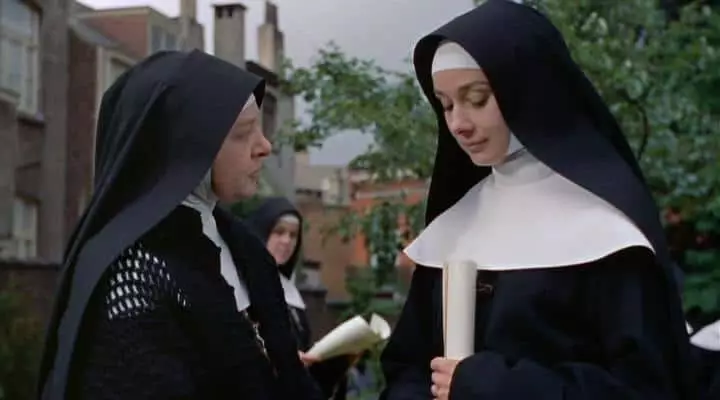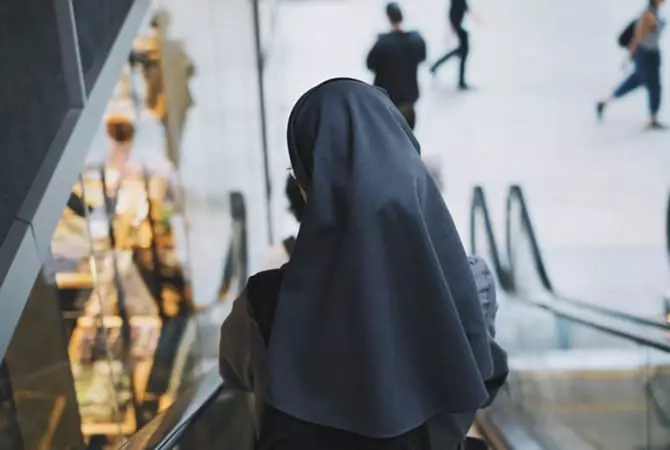Having stopped (tonsion) is the main rite of initiation in monasticism. A person who takes a tonsure gives a few lifelong vows in front of the Lord, having enjoyed the Divine grace. Having stopped into the nuns - always represents an absolutely voluntary desire, it can in no way be imposed on the outside. Let's try to figure out the features of this sacred ritual in today's material.

Historical information
The followers of Jesus Christ spread his knowledge over the whole globe. People who believed them began to adhere to the ascetic lifestyle. A little later, a separate category of believers begins to unite small groups to serve God.Find out what awaits you today - a horoscope for today for all zodiac signs
Where and when concretely there was a monastic stop - the story did not bring to this day. It is only known that initially nuns should have given a vow of celibacy, and later there were other vows. Catholics when dedicated to the monks spent a ritual, called "Gumeno" - a special haircut with shaving a mug on the head.
Orthodox Christians did not adhere to such a tradition and even, on the contrary, we were taken by the clergy and monks of long hair and beard.
Towing into the monks - what does it mean?
Often novices equate to God's angels. They are called "Angels on Earth." And, however, adopt the monastic san is a very difficult decision, an affordable not every person.
Angels are completely disinterested creatures, not seeking any benefit. They rightly serve the Lord. Monks do the same. By making the monastic stop, the Inoka give their lives in the full ministry of the Almighty.
By numerous requests of readers, we have prepared an application "Orthodox calendar" for a smartphone. Every morning you will receive information about the current day: Holidays, posts, commemoration days, prayers, parables.
Download free: Orthodox calendar 2020 (Available on Android)
This ritual is often compared with the second baptism - there is a sharp change in human life. Monasticism is on the one hand feat, and on the other hand, an incredibly complex mission. Non-promises as a reward for all deprivation receive a special connection with the Lord.
On the other hand, they deprive themselves many earthly joys, do not create a family, that is, the human race does not continue. Any medal always has a reverse side. In addition, the human ego is a very difficult thing, completely overcome which is only elected. Therefore, sometimes the buildings cannot withstand such a load and remove the vow, returning to ordinary life.
Interesting! Up to 19 centuries, it was not possible to renounce the monastic Sana. Today it is quite realistic if desired.
Towle in nuns: Steps, types of monastics
Those who want to get into the nuns should pass long preparation, namely:
- To be an affordable.
- Then she can become a candidate in obochitsa.
- And only then - the most obedient.
Being an eyeball is possible to every believer Christian. At this stage, a person performs a certain job, helping the monastery monastery in his free time.
Highups are not always novices, they may have a family, worldly life. And in some cases they even get a salary from the monastery for their work. But if the hardware makes a decision to live in a monastery, then it must be configured to adhere to the established rules: not to violate the mode of the day, to abandon the detrimental habits.

A woman who wants to become a nun, when entering the abode, becomes a candidate in obochitsa. Other sisters introduce it to the rules of the charter, and she already must determine for themselves, whether she agrees to conduct a strict monastic life.
Interesting! In the role of candidates in the novices will have to stay for about 3 years. But the exact period of time is established by the abode of the abode and senior sisters.
If, at the end of the test period, the applicant does not change its decision to remain under the monastery, there are no external obstacles - it is credited to the obedients. The abundant of the monastery and the candidate itself write the petition of the ruling bike. Having received a blessing, the sister will need to undergo a special ritual of dedication to the nun.
In modern Russian Orthodoxy, three varieties of tonsig in the nuns are used:
- Ryasofor.
- Small schima (otherwise mantle).
- Great schima.
To get into the first type - Ryasofor, a woman will need to live at no less than three years in the monastery. True, in some cases, exceptions are made - for example, if the candidate is fatally ill and it remains less laid for the time limit.
Ritual Towing in the nun Ryasofor includes:
- utterance of special prayers;
- cutting hair in the shape of a cross;
- Change or leaving the world name;
- vestments in special clothing (row and hood);
- There are no vows.
But although this type of monasticism does not imply the use of vows, the decision to devote their lives to God is a very serious obligation. Ryasofor is a preparatory stage of monastics, it is similar to the wrap before marriage. At this stage, the woman is called Inokina, a rowsorphous obedient or a rocky nun. She gets God's grace, as well as the help of that holy personality, in honor of which she was told in the process of the rite.
It should be noted that the launching scheme in the nun can vary depending on the specific monastery. It is so possible that the Ryasofor's stage is skipped, immediately is dedicated to a small schima. And some monks on the Saint Athos and at all took the Great Schima without prior preparation. All people are different, everyone is at different levels of spiritual development, so sometimes exceptions are made from the general rules.
The ritual of the tensions into a small schima is already the beginning of monocities. At this stage, the woman should give vows in front of the Lord, to completely abandon worldly life, she gives a new name and special apparel.
The rite of initiation in the Great Schima is distinguished by special solemnity: various prayers are read for a long time, Igumen gives the nun your instructions. Then she gets a new name and clothing, as well as the Great Paraman (a special handkerchief with sacred Christian symbolism), kuska with Analya. Now it is called a scale.
Interesting! In Russian Orthodoxy to Great Schima, seriously ill or elderly people are often raised.
The rite is made by either directly ruling bishops or other superior officials of the clergy (Ighmen, Ieromonakh, Archimandritis), but necessarily with its permission.
Tesle in the nun: how is it, the features of monastics
Monasticism does not apply to the main church sacraments. But a large number of priests find him for the second baptism. Towing symbolizes obedience and sacrifice to God. A serious monasticism begins with a break in a small schima (either a mantle). This rite is already a longer than the preceding Ryasofor, more solemn. Towing in the nun as happens at this stage?

Initially, the trail is performed from a week about the prodigal son. The future nuns at the same time should crawl on the stomach in the central part of the temple. It is closed in a long white shirt. In the center of the building, she must lie face down, hands spread crucifier. On the sides of She are two nuns that cover the woman with their schims.
The initial stage of the ritual is designed to recall that monasticism is the path of crying, heart repentance. Then Igumen appeals to the woman, calls her to get up, begins to ask whether it makes the choice of monastic life. The reality emphasizes that the vows, data will be adopted by Jesus Christ and his mother, as well as all the holy and angelic entities.
Then the time comes to give vows:
- The obedient promises to live in the monastery (where the dedication is in either another, where will be sent);
- expresses the readiness to live in monastic charters without disturbing them;
- observe landing and chastity;
- cope with the grief of monastic life;
- gives vow of celibacy;
- promises to be obedient (igumen and other sisters);
- Gives voeses poverty.
Then the rector fully argues about the meaning of the life of the ink, puts on the head of the future nun a book, reads prayers to instruct it on the path of ministry, to enjoy and make the grace of the Holy Spirit. The igumen will perform the role of the confessor of New Inkini (but he can entrust this task of an experienced nun).
After the obedient, it is necessary to submit a specially thrown scissors from the floor three times - thereby confirms that its choice is voluntary. Then the cruciform cutting hair, the nun is voiced by its new name (as a rule, in honor of the Holy Personality, on the day of which it appeared).
Who can, and who can not be taken through the nun?
It is important to know some formalities if you want to become a nun. After all, in some cases you will be forced to refuse. What exactly?
- If you are in an official marriage. The monastery does not take people who have happy family relationships (and they are unlikely to have such a desire).
- If you are alone, but you have juvenile children. According to the rules of the Russian Orthodox Church, it is unacceptable to take with them children to the abode, because monasticism is only a voluntary decision of a person. It can not be imposed by anyone.
- If you have unresolved problems of family, property or legal.
As a rule, it is possible to take a woman in a nun, a woman in the achievement of the age of thirty years old. If she has minor children, they will need to make a testimony about their care.
Remember that he tonsured in the nun - a very serious and responsible step, people do not come to him just like this, guided by momentary motifs. The decision to devote yourself to God must be carefully thoughtfully and pass the test of time. Only then can be considered correct.
